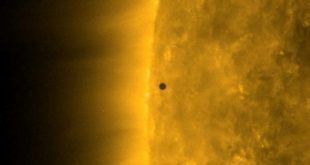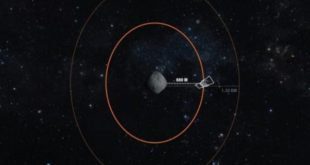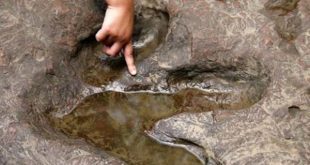 Astronomers for decades looking for “protozilla”, finally found the planet, in certain circumstances suitable for living. And it was Venus.
Astronomers for decades looking for “protozilla”, finally found the planet, in certain circumstances suitable for living. And it was Venus.
Experts from Sweden and the USA did a lot of research before we came to this conclusion. According to them, there is good reason to assume that in ancient times the planet Earth’s sister planet could be inhabited. And even for many billions of years before Earth life began.
So, perhaps Earth will have to give the palm to the question of habitability in the Solar system Venus. Scientists say that if now create for Venus certain conditions, it would be suitable for settlement. To do this, the planet needs to rotate on sixteen earth days slower. Then the temperature of Venus down to about the earth. And even the fact that Venus is closer to the Sun, would not be a disadvantage, as the high density of the atmosphere would not allow the sun to burn the planet’s surface. Not to be unfounded, a team of astronomers have created a 3D model, which demonstrates how different weather conditions of Venus for the last three billion years. For a more scrupulous precision, the researchers used topographic data of the probe Magellan, sending pictures of Venus to Earth for many years. No wonder Venus is usually called Earth’s sister planet.
In addition to the direct proximity of the orbits, planets have many similar astronomical figures. In addition, these two heavenly bodies have almost the same mass. The main differences are the planets temperature and atmospheric density. The temperature of the Venusian atmosphere close to five hundred degrees Celsius. And its density is ninety times greater than earth’s. For humans, these figures are, to put it mildly, deadly.
Interestingly, even in the twentieth century, a scientist named Carl Sagan came up with an original way to make Venus habitable. It is suggested to download a rocket traveling there, a large number of algae of different types. After reaching orbit, the algae should be disposed of in the upper atmosphere. It was assumed that the high density of the Venusian atmosphere will not allow the algae to fall to the surface, and they remain in the air. So, in limbo, they will begin to absorb carbon dioxide, which is a major component of the Venusian atmosphere, and instead of using photosynthesis to give off oxygen. And, if all went according to plan, then a couple of hundred years, Venus would be filled with oxygen, supporting diverse life forms.








